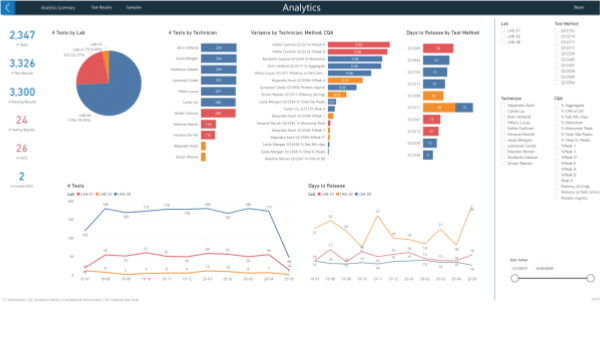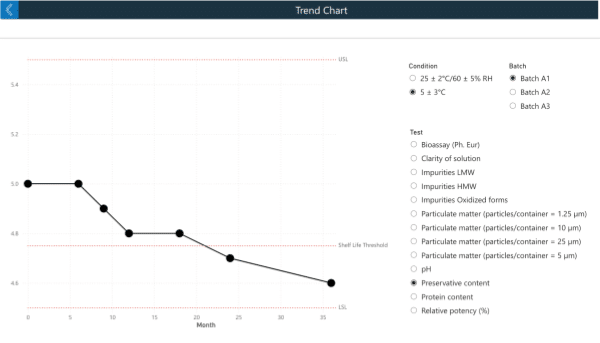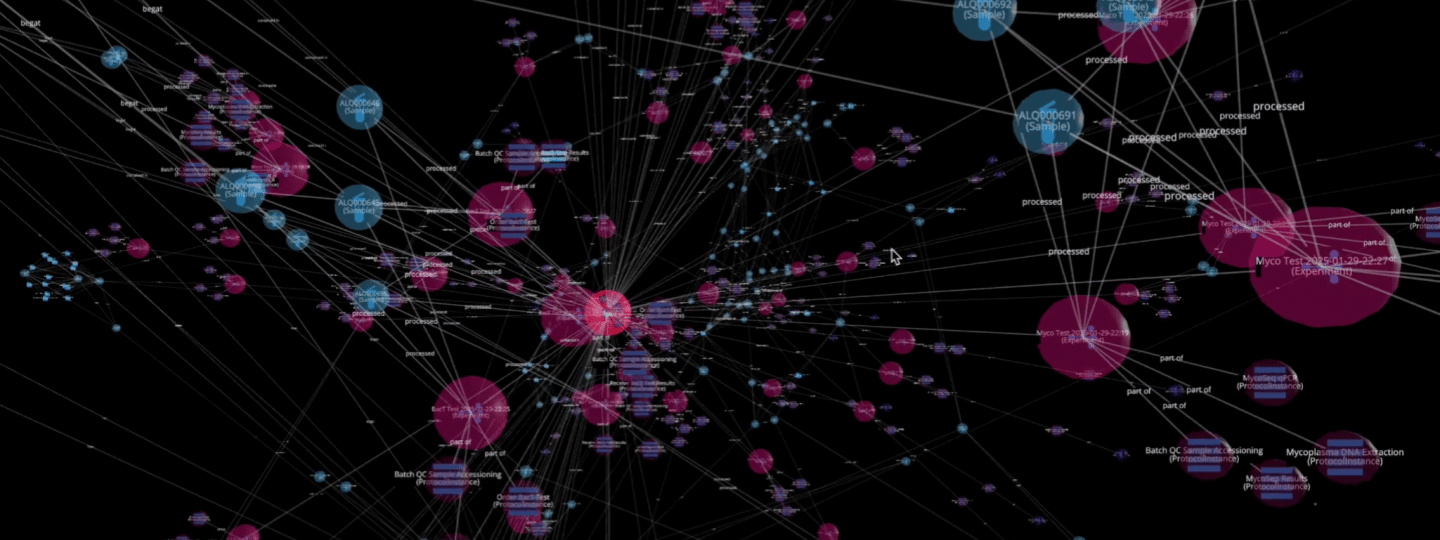L7 | CHATS
thought leadership
Stop Feeding AI Junk Data: The Role of Data Contextualization in Smarter Manufacturing
by Kevin McMahon | posted on March 25, 2025
Manufacturing Execution Systems (MES) have long been the backbone of modern life sciences manufacturing. They help organizations manage operations, track production, and ensure compliance in highly regulated industries like pharma and cell & gene therapy (CGT). However, as AI adoption accelerates across the industry, MES faces a new challenge that many organizations are unprepared for. AI thrives on data, but not just any data. Without structured, contextualized information, AI turns out to be an expensive experiment rather than a transformative tool.
Why Traditional MES is Holding Back AI Innovation
Traditional MES solutions, designed primarily for documentation and process control, often lack the agility and interoperability required to support AI-driven initiatives. As a result, manufacturers struggle to extract meaningful intelligence from their systems, leaving them with disconnected data silos instead of a unified, AI-ready foundation. Here are the two major limitations they suffer from:
- Rigid and slow to adapt – Traditional MES solutions are monolithic and complex to change. Any updates to processes or workflows require specialized SMEs or external vendors, causing long delays and high costs.
- Disconnected data silos – Many MES platforms don’t seamlessly integrate with LIMS, QMS, or other solutions, making it challenging to cross reference batches, verify status, directly from primary source systems, and achieve real-time operational insights that allow prevention rather than reaction.
For AI to succeed in manufacturing, MES can’t just be a passive system of record—it needs to be part of a broader orchestration strategy that ensures data is structured, contextualized, easily accessed, and AI-ready.
Orchestration Platforms: The Missing Link Between MES and AI Readiness
This is where orchestration platforms like L7|ESP show the way. AI can only be as effective as the data it is built and trained upon, and that requires an ecosystem that doesn’t just collect data but actively structures and contextualizes it in real time. L7|ESP is designed to unify disparate systems—MES, LIMS, QMS, ERP, DCS, and more—by ensuring data flows seamlessly end-to-end.
Whether integrating with legacy systems or leveraging its built-in applications, such as L7 MES, the L7|ESP platform enables real-time process execution, data integrity, and regulatory compliance. This flexibility allows organizations to modernize their operations without completely overhauling existing infrastructure while ensuring that AI has a solid, structured data foundation to thrive.
L7 Knowledge Graph and L7|INTELLIGENCE: Turning Data into Actionable Intelligence
Built within the platform, the L7 Knowledge Graph enhances data visibility by offering a dynamic visualization of relationships between data points across manufacturing processes. This powerful tool allows organizations to easily trace batch records, equipment status, sample tracking, and compliance data, providing a clearer understanding of how key data points relate to one another.
While L7|ESP structures and contextualizes data at the source and the L7 Knowledge Graph provides a visual representation of these connections, L7|INTELLIGENCE takes this structured data to the next level. With L7|INTELLIGENCE, organizations can quickly identify trends, dependencies, and potential bottlenecks—transforming data into actionable insights that drive smarter decision-making and greater operational efficiency.
By orchestrating and contextualizing their data in real-time, organizations can finally break free from silos and lay the foundation for true AI readiness. With seamless integration across systems, they can ensure that automation, compliance, and intelligence work together—unlocking new efficiencies and driving innovation.




What Life Sciences Organizations Need to Do Now
From my experience working with MES and AI readiness, one thing is clear: organizations don’t need more data—they need smarter data. That starts with having a well-defined data model and the right data infrastructure in place. Companies that fail to establish structured, contextualized data will continue to struggle with disconnected information and missed opportunities.
By adopting a digital orchestration and data contextualization platform like L7|ESP, life sciences organizations will achieve the following:
- Connect all their data sources into a single, structured model.
- Automate data integration across manufacturing, quality, and research domains.
- Power AI-driven insights that drive efficiency, compliance, and innovation.
Contact us to learn more about how L7|ESP can help you create an AI-ready data infrastructure, or explore our website at L7Informatics.com.

